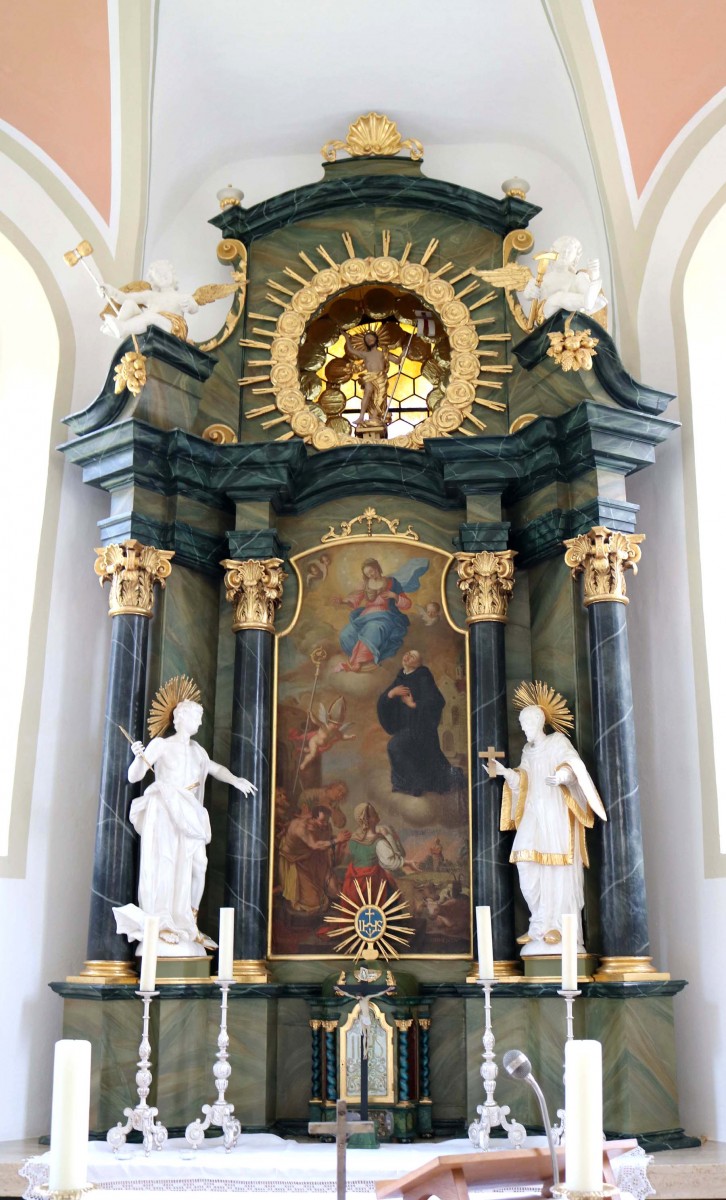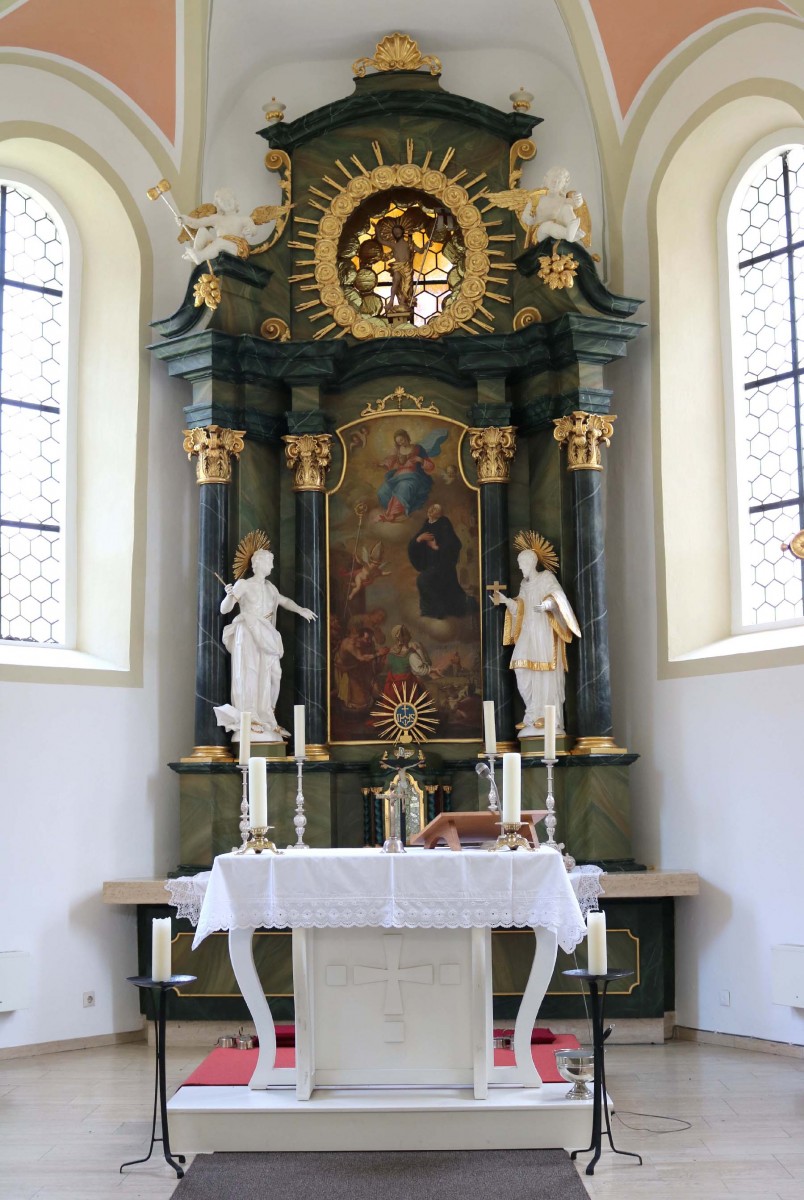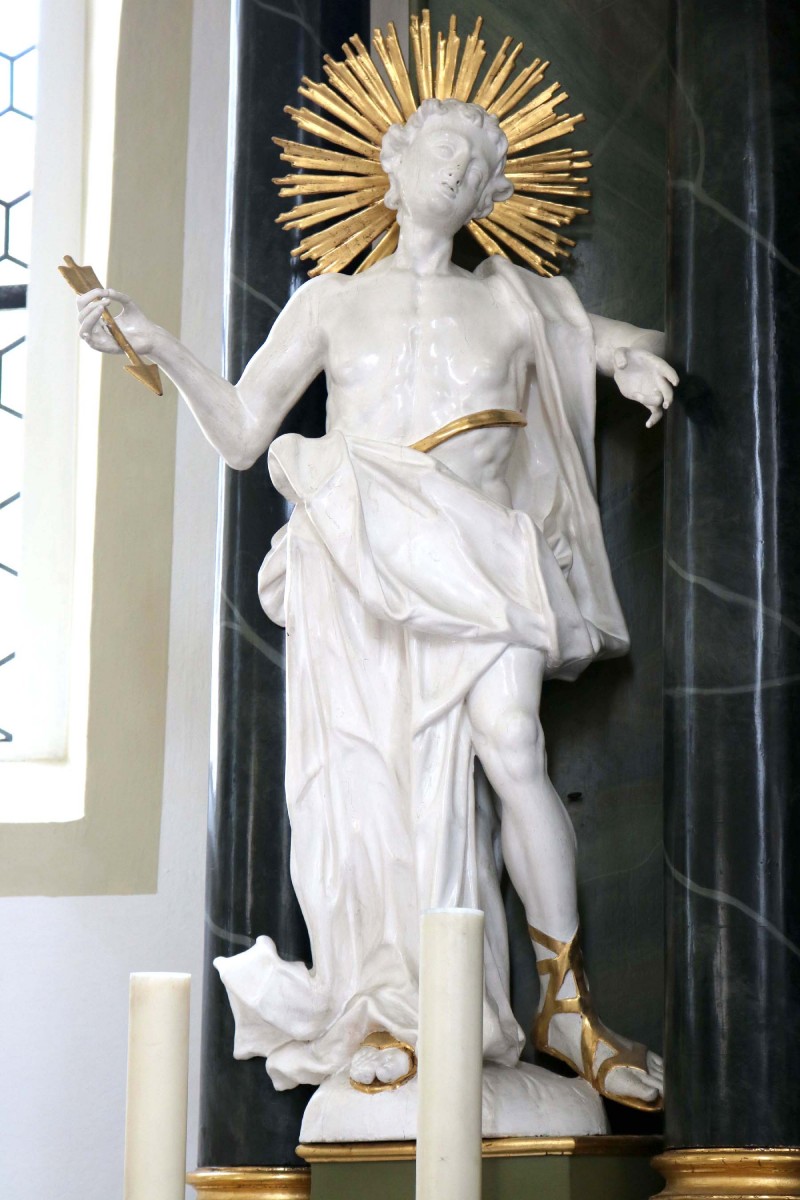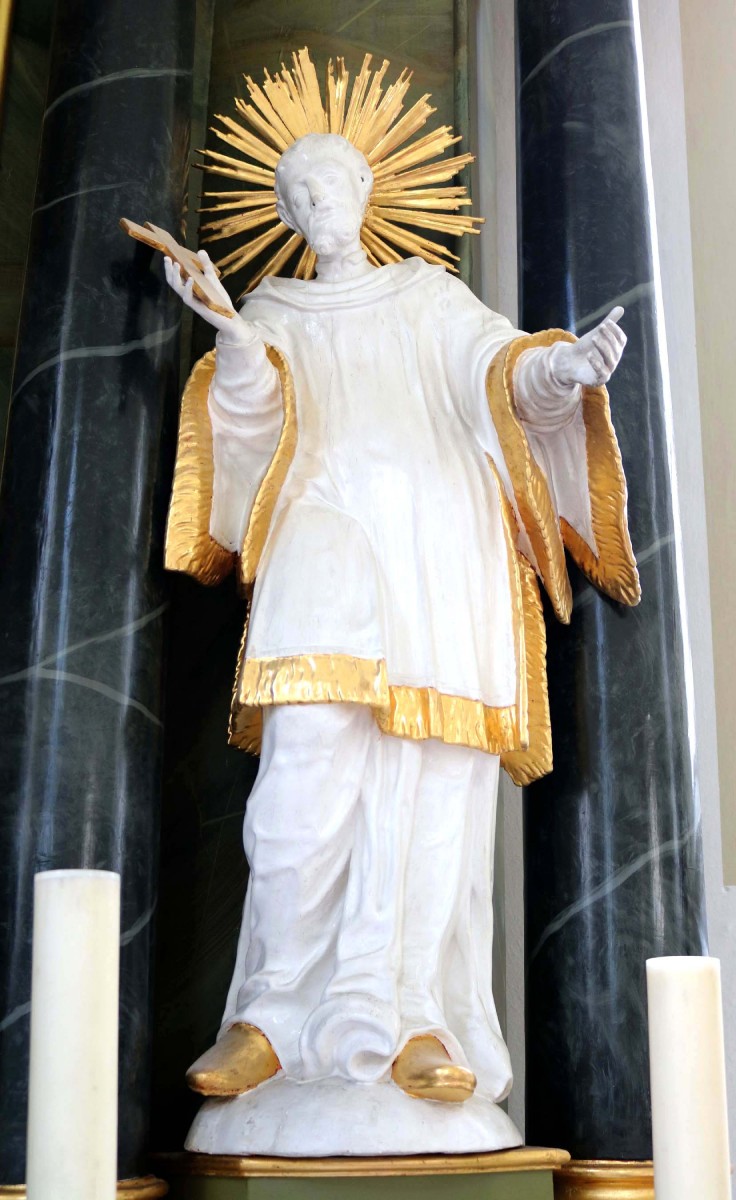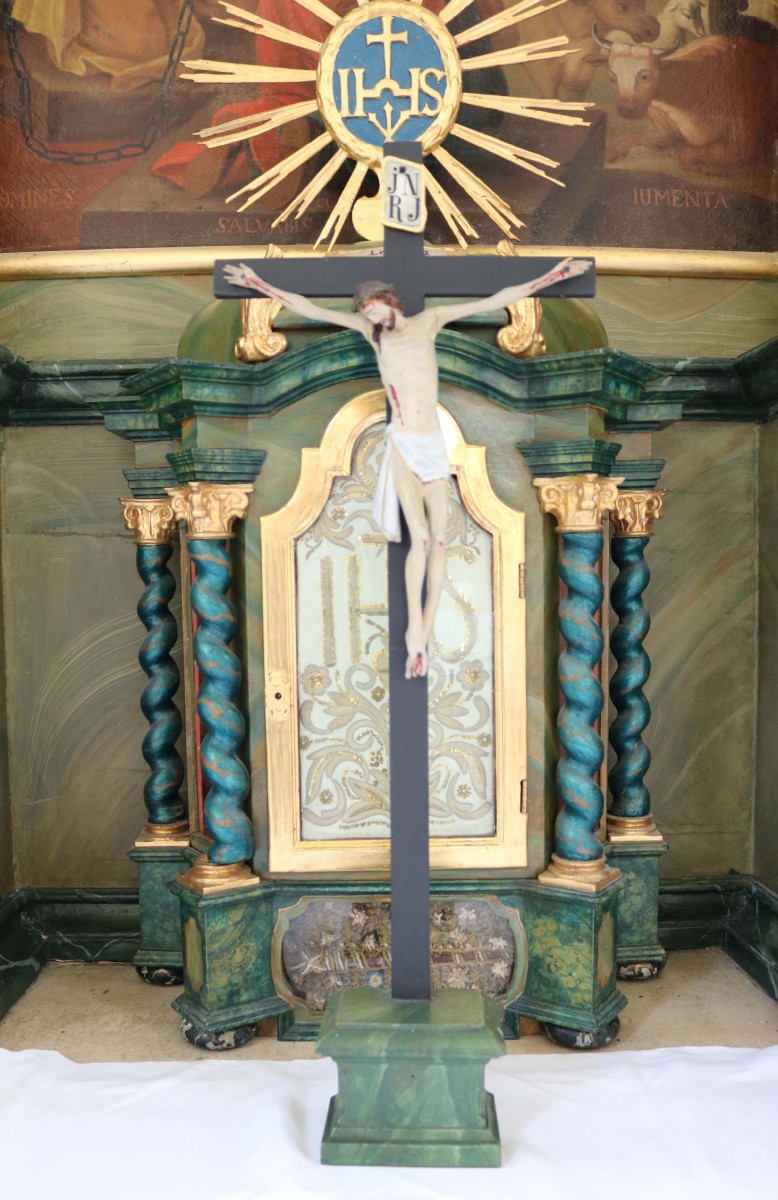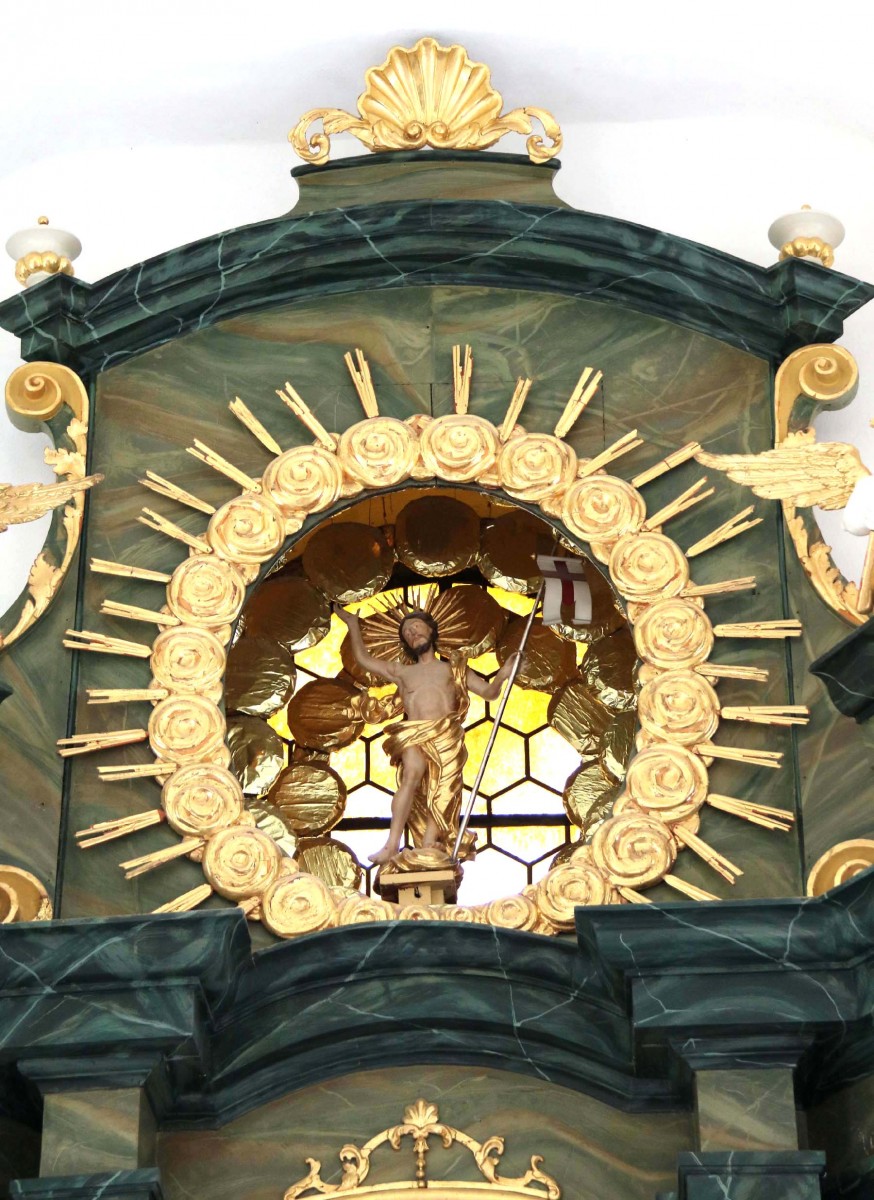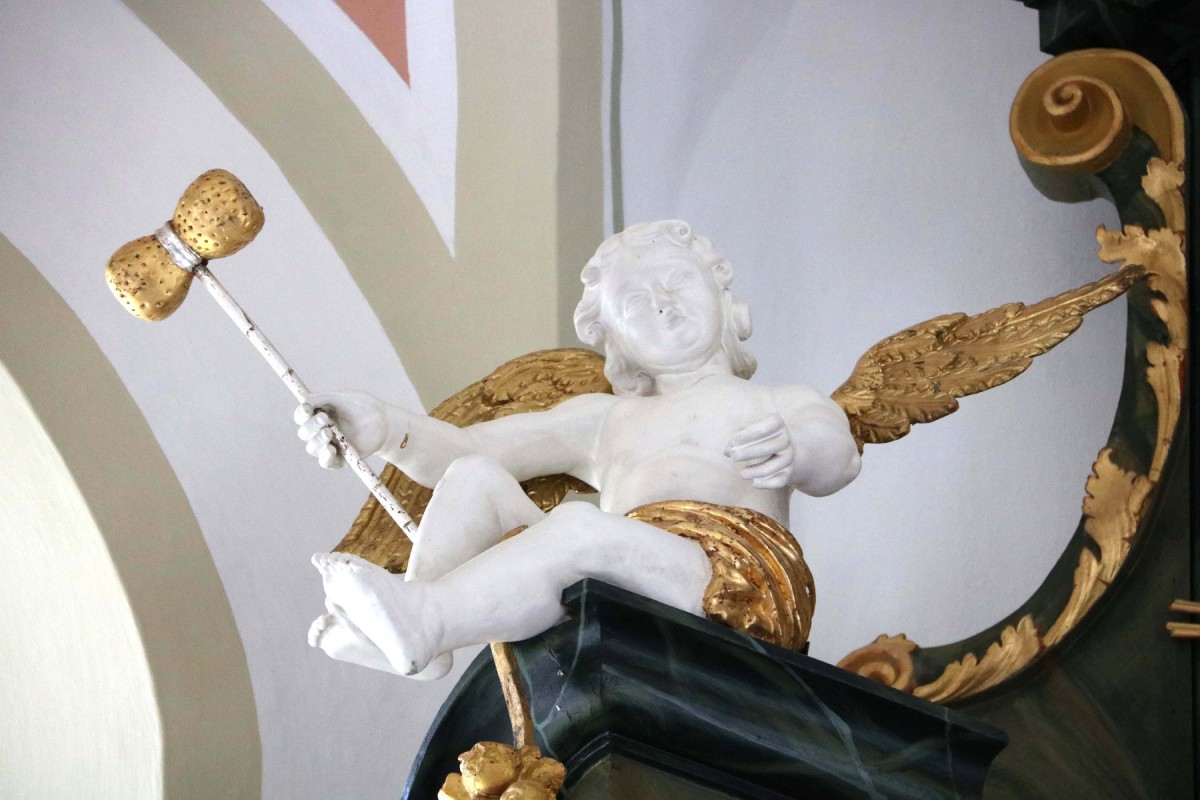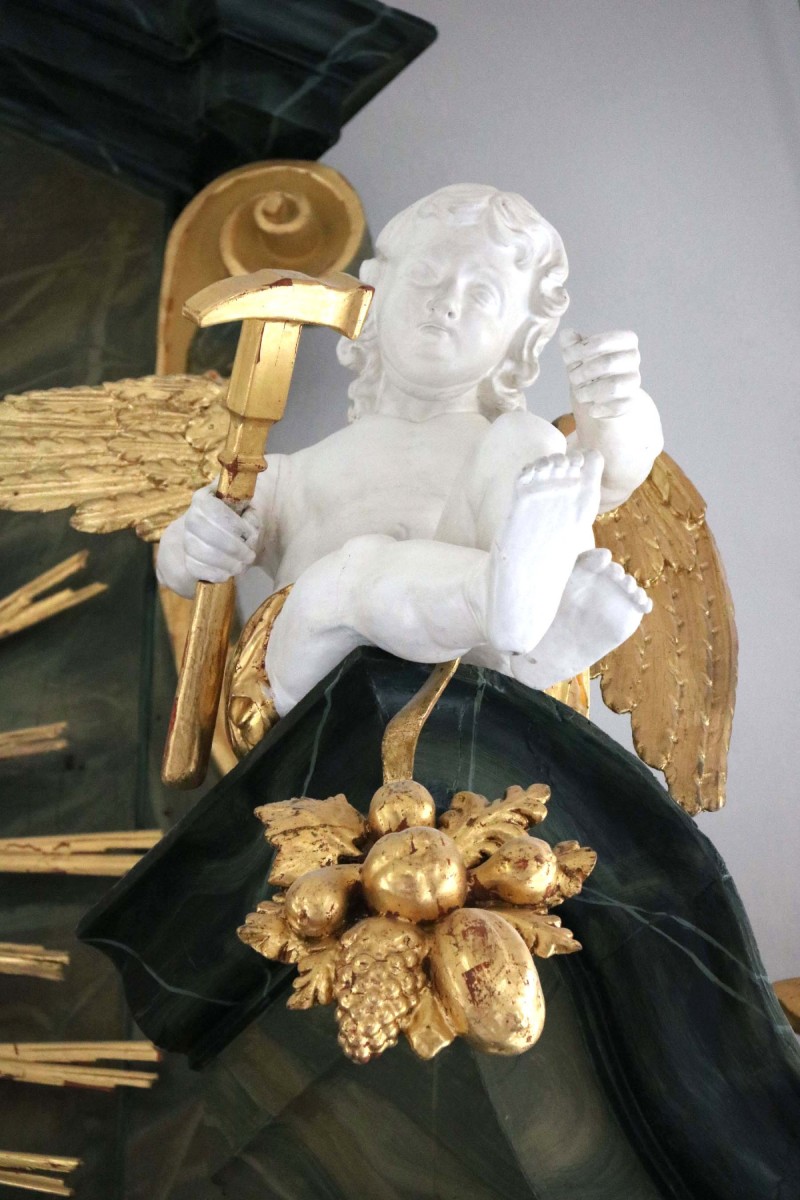Location
Germany, Baden-Württemberg, Wiesensteig
Cemetery chapel of St Leonard (Leonhardskapelle)
Artwork
High Altar of the Cemetery Chapel of St Leonard in Wiesensteig
Type
High altar
Critical History
The cemetery chapel in Wiesensteig dedicated to St Leonard was probably erected in the 14th century, but mentioned for the first time only in 1432; some alterations were made in 1592 and the great fire from 1648 must have damaged the chapel because an altar was consecrated in 1658.1 According to the account books of the cemetery church, in 1737 they extended the building and added a little tower; in the same year the shriners Johann Georg Straub the Elder and his brother Johannes Straub were commissioned with a new Baroque interior. In 1738 Johann Georg was paid 272 fl. 52 xr. in total for the pulpit (including polychromy), nine church pews, the choir stalls, the church door (including paint), the crucifix and one of the side altars (with polychromy); Johannes Straub delivered some more church pews, the high altar and one side altar with polychromy for 244 fl. 24 xr. in 1738 and in 1743 Johannes Straub made a new tabernacle for the cemetery ("auf den Gottesakher"). Johann Georg Straub was paid for the gilded decoration of the high altar in 1747.2 A sculptor from Deggingen delivered two angels for the John of Nepomuk altar on the left side in 1740, the canvas of the main altar was painted by an artist from Eybach.3 The two Straub brothers were definitely responsible for the carpentry as well as for the polychromy, the gilding and most of the sculptural and decorative woodcarving for the altars.
The central piece of the altar is a painting of the church patron St Leonard adoring the Virgin Mary, it is flanked by monumental columns and two sculptures of St Sebastian with arrows (left) and probably St Francis Xavier with a crucifix (right). In the round opening of the aedicula above appears the figure of Christ the Saviour in a gilded gloriole. The two angel-putti on the left and the right side of the strutted gable show Arma Christi, the instruments of the Passion: the Holy Sponge set on a reed (left) and the hammer (left), the nails are missing.
Construction / Execution
The high altar is situated in the presbytery of the little chapel. The architecture of the retable altar consist of a mensa, a retable with four columns (Corinthian order) and an aedicula above the strutted gable. It has a round opening, which is lit by natural light from the window behind. The current polychromy imitates black and greenish marble; the capitals, the gloriole and the ornamental decoration is gilded, the figural sculptures polished white, partially gilded except for the figure of Christ, which is polychrome and partially gilded. The tabernacle by Johannes Straub is a domed tempietto with four twisted columns, polychromy and partial gilding. The door appears to be a19th century addition.
Components
- Carpentry
- Main altar
- Author: (the Elder) Johann Georg Straub (Wiesensteig 1674 – Wiesensteig 1755)
- Completed: 1737 – 1738
- Patron(s): Collegiate Chapter of St Cyriacus, Wiesensteig, chapter
- Technique(s): sawing, wood carving
- Material(s): wood
- Carpentry
- Main altar
- Author: Johannes Straub (Wiesensteig 1681 – Wiesensteig 1759)
- Completed: 1737 – 1738
- Patron(s): Collegiate Chapter of St Cyriacus, Wiesensteig, chapter
- Technique(s): sawing, wood carving
- Material(s): wood
- Carpentry
- Tabernacle
- Author: Johannes Straub (Wiesensteig 1681 – Wiesensteig 1759)
- Completed: 1743 – 1743
- Patron(s): Collegiate Chapter of St Cyriacus, Wiesensteig, chapter
- Technique(s): sawing, wood carving
- Material(s): wood
- Sculpture
- Completed: 1737 – 1738
- Patron(s): Collegiate Chapter of St Cyriacus, Wiesensteig, chapter
- Technique(s): wood carving
- Material(s): wood
- Sculpture
- Wooden decoration
- Author: (the Elder) Johann Georg Straub (Wiesensteig 1674 – Wiesensteig 1755)
- Completed: 1747 – 1747
- Patron(s): Collegiate Chapter of St Cyriacus, Wiesensteig, chapter
- Technique(s): wood carving
- Polychromy
- Author: Johannes Straub (Wiesensteig 1681 – Wiesensteig 1759)
- Completed: 1738 – 1743
- Patron(s): Collegiate Chapter of St Cyriacus, Wiesensteig, chapter
- Polychromy
- Wooden decoration
- Author: (the Elder) Johann Georg Straub (Wiesensteig 1674 – Wiesensteig 1755)
- Completed: 1747 – 1747
- Patron(s): Collegiate Chapter of St Cyriacus, Wiesensteig, chapter
- Material(s): gold
- Painting
- St Leonard adoring the Maria Immaculata
- Completed: 1740 – 1740
- Patron(s): Collegiate Chapter of St Cyriacus, Wiesensteig, chapter
- Technique(s): oil on canvas
Conservation-restoration
- 1969
Treatment Description
From 1968 to June 1969, architect Paul Anschütz (Wiesensteig) and painter Lothar Bohring (Kirchheim) restored the chapel.4
Images
- The high altar of the cemetery chapel of St Leonhard in Wiesensteig (photo by Julia Strobl, 2018)
- The high altar of the cemetery chapel of St Leonhard in Wiesensteig (photo by Julia Strobl, 2018)
- St Sebastian (photo by Julia Strobl, 2018)
- St Francis Xavier (photo Julia Strobl, 2018)
- The tabernacle by Johannes Straub, 1743 (photo Julia Strobl, 2018)
- The aedicula of the high altar with Christ the Savior (photo Julia Strobl, 2018)
- Angel with the Holy Sponge on the left side (photo by Julia Strobl, 2018)
- Angel with the hammer on the right side (photo by Julia Strobl, 2018)
Catalogue entry prepared by Julia Strobl
Recommended citation: Julia Strobl, High Altar of the Cemetery Chapel of St Leonard in Wiesensteig, in: TrArS – Tracing the Art of the Straub Family, 2018, (accessed 25/10/2025) URL
